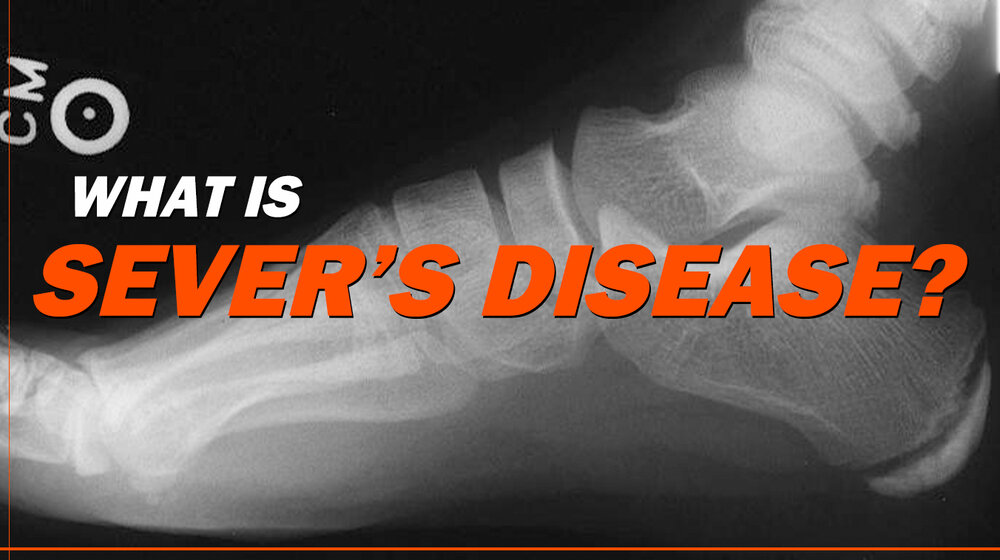What is Sever’s disease?
Sever’s disease is a condition characterised by pain and swelling around the heel due to a growth spurt in young adolescents. Growth occurs around regions called growth plates located at the ends of bones.

What are the Signs & Symptoms of Sever’s disease?
Symptoms may be present in one or both heels and include –
- Pain & tenderness with pressure
- Swelling and redness
- Warm sensation
- Initial stiffness in ankle & sensation of tightness on walking, especially after rest
- Limping when walking
- Pain when heel is squeezed
Symptoms are usually aggravated with physical activity especially excessive weight bearing sports involving running and jumping and are alleviated with rest.

What causes Sever’s disease?
During puberty, adolescents experience periods of growth spurts around the ends of their bones.
However, an imbalance in growth rates between the bones, muscles and tendons may occur, resulting in excessive tension across these structures.
In particular, the excessive forces generated by our Achilles tendon which attaches to our heel produces repetitive strain and microtrauma around the growth plates. (Smith & Varacallo, 2020).
When this occurs, the growth plates may become irritated due to overload over time which may result in tightness, pain and swelling around the heel region.
Who is affected?
Typically, adolescents are generally affected –
- During typical growth spurts (around 9-14 years of age).
- Active children, involved in weight bearing activity, typically activities involving running and jumping especially on hard surfaces.

Treatment strategies?
Treatment involves a combination of interventions which may include –
- Modifying activity – limiting pain producing activities with periodic rest during periods of exacerbation.
- Load management – Modifying load usually through altering the intensity, frequency & type of activity.
- Education – Educating people on symptoms & how to manage periodic flare-ups.
- Use of a heel raise & appropriate footwear – Heel raises are used in shoes to take the pressure off the Achilles tendon by reducing tension. Appropriate footwear can also help in reducing stress & supporting the foot.
- Cold packs – Applied to the heel region for around 10-15 minutes during periods of exacerbation.
- Allied Health Intervention – Physiotherapists and other allied health professionals and medical personnel can address any musculoskeletal and biomechanical factors that may be contributing to the condition. Furthermore, medical advice may include the use of medication where necessary to reduce pain and inflammation.
- Time – Generally, symptoms ease within a few weeks when making appropriate adjustments regarding the sport that is being played, and incorporating the treatment strategies outlined.
References
Smith JM, Varacallo M. Sever Disease. In: StatPearls. Treasure Island (FL): StatPearls Publishing; November 21, 2020.

